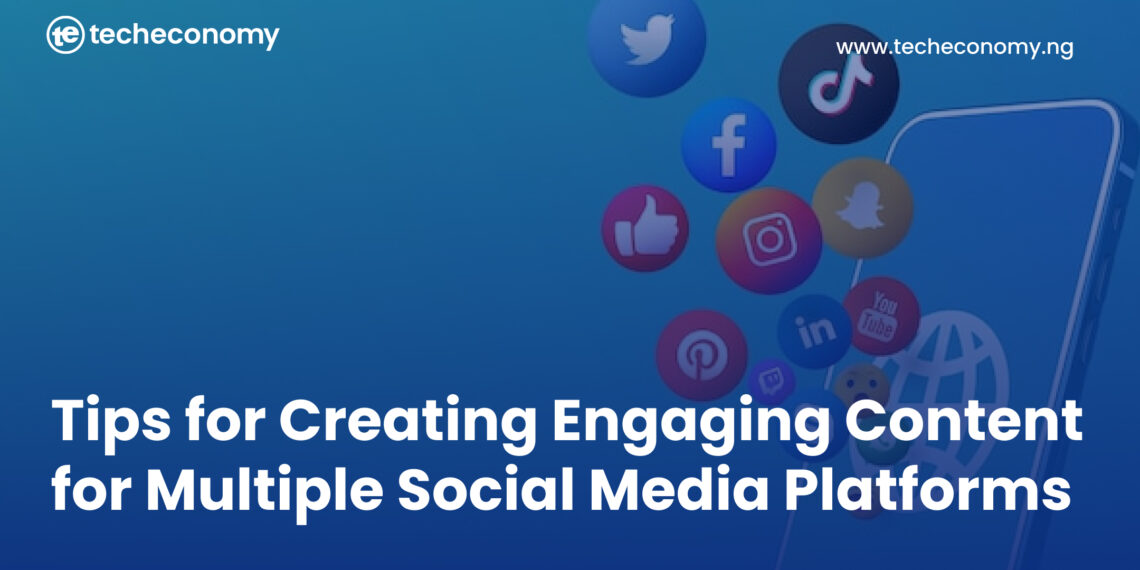I have no intention of starting this piece with what we already know – social media as a powerful tool for businesses of all sizes to connect with target audiences, promote products or services, and build brand awareness – rather my focus spans the need for undying attraction of users.
With so many social media platforms available, how do business owners even manage to solidly engage and retain an audience across every single one? Of course, it can be difficult.
Knowing where to start and how to create content that is engaging and effective on these multiple platforms, is indispensable.
I’d be moving from specific to general this time. Let’s start with the tips for creating engaging content for specific social media platforms, and then we move to the wider scale.
Facebook is a great platform for sharing a variety of content, including text, photos, videos, and links. When creating content for Facebook, keep in mind that the average Facebook user has an attention span of just 8 seconds. So, make sure your content is clear, concise, and visually appealing. You should also use relevant hashtags and ask questions to encourage engagement.
X (Twitter)
Twitter, now X, is a good platform for sharing short, text-based updates, as well as photos and videos. When creating content for X, hold tight to the knowledge that tweets are limited to 280 characters. So, be sure to get your point across quickly and clearly. Also, utilise relevant hashtags and mention other X users to reach a wider audience.
Instagram is a visual platform, so it’s important to use high-quality photos and videos in your posts. You can also use Instagram Stories to share behind-the-scenes content and connect with your audience on a more personal level.
LinkedIn is a professional networking platform, so it’s important to share content relevant to your industry, providing value to your audience. Share articles, blog posts, infographics, and other types of content that will help your audience learn and grow, join and participate in LinkedIn groups, network with other professionals and build relationships.
Now, let’s jump right into some tips for creating engaging content for multiple social media platforms, on a general basis:
Know your audience
A very important step in creating engaging content is understanding your target audience. What social media platforms do they use? What type of content do they enjoy? What are their needs and interests? Once you understand your audience, you can tailor your content to their specific preferences.
Choose the right platforms
Not all social media platforms are created equal. Some platforms are better suited for certain types of content than others. For instance, Instagram is a great platform for sharing visually appealing content, such as photos and videos. Twitter is good for sharing short, text-based updates. LinkedIn is mainly used for sharing professional content, such as articles and blog posts. When choosing which social media platforms to use, consider your target audience and the type of content you want to share.
Create high-quality content
No matter what social media platform you’re using, creating high-quality content that is informative, engaging, and visually appealing is a must. Your content should be well-written and free of errors. It should also be relevant to your audience and provide them with value.
Use visuals
Visual content is more engaging than text-based content, so try to incorporate visuals into your social media posts whenever possible. This could include photos, videos, infographics, or GIFs. When choosing visuals, make sure they are high-quality and relevant to your content.
Write strong headlines and captions
Your headlines and captions are the first thing people will see, so it’s important to make them count. Your headlines and captions should be clear, concise, and attention-grabbing. They should also accurately reflect the content of your post.
Use relevant hashtags
Hashtags will get your content to a wider audience. When using hashtags, ensure they are relevant to your content and they are popular enough to be seen, but not so popular that they are too competitive.
Interact with your audience
Social media is a two-way street. Don’t just post content and then disappear. Take the time to interact with your audience by responding to comments, answering questions, and participating in conversations.
Analyse your results
It’s important to track your social media results so you can see what’s working and what’s not. This will help you refine your content strategy over time.








Comments 1